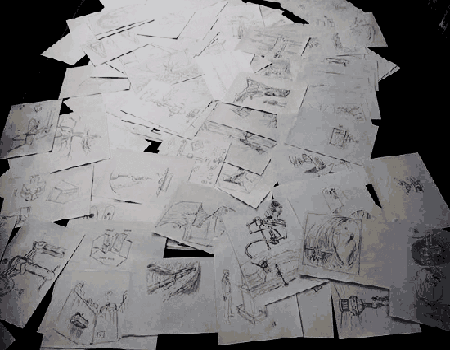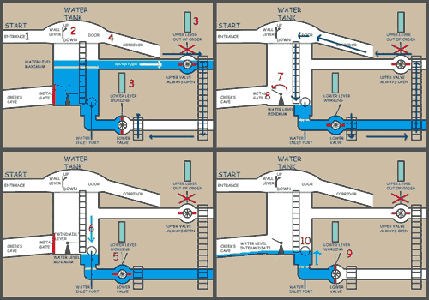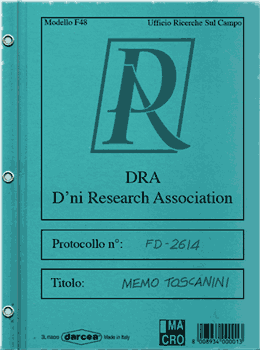Building any Uru age requires a huge amount of hard work, offering in exchange lots of fun and learning. Many people are aware of the difficulties of 3d modelling, a job with a steep learning curve, very labour intensive and requiring a lot of patience. Exactly the same words can be repeated for programming, particularly if PyPRP is used. I was (and largely still am) not proficient in both these disciplines. Consequently, I concentrated on two other jobs: writing and artworks. This section deals with the last.

Some of the Adrael sketches piled up on the floor
For the age of Adrael, artworks were used extensively. Altogether, they can be numbered in the hundreds; surely more than five hundred, perhaps more than one thousand separate sketches, paintings and graphics were created. I piled up such a big number for two reasons. Firstly, I had a lot to learn. In the beginning, many artworks were simply discarded as unsuitable for 3d modelling or for the limitations and specifications of the game engine. Secondly, it was the easier way I had to conceive, develop and then explain a puzzle to other age builders. I do believe that some artistic ability is needed for an age project, but what really matters is the clarity of drawings and their comprehensibility for 3d modellers (and it helps if modellers are smart!)

A typical concept art: an early version of the mine area,
with water coming out of a tube near a mining digger
Adrael's arts essentially came in three flavours: concept arts, designs, and decals.
Concept arts are usually panoramas, giving a general idea of an age, its landscape and its atmosphere. They can be works of art in their own right, but in the case of Adrael they remained somewhat utilitarian. I was working in my free time, you know...

Here is one of the assets that changed most from sketch to
3d model: the final version was totally reworked by Emor
Designs are more technical, with less emphasis on aesthetics, mainly focused on their function, that is: transmit as much information as possible to the modellers. As already said elsewhere, Adrael team modellers always had a lot of freedom in translating 2d sketches into 3d models, but with time – and thanks to their teaching – I learned to design with modelling efficiency in mind.

The water tank puzzle shuffle:
here just four of the eight steps are diagrammed
Some designs are fast sketches of simple objects, such as a paintbrush; others are complex, such as the project of a full puzzle. In the case of the water tank puzzle, several sketches and versions were made, including a purely technical series of drawings, illustrating the many steps needed to reach solution.

The "fishes" decal for the DRA office floor
Decals are artworks used directly within the age applied to 3d assets. To this category belong the floor decorations, the paintworks, plaques, D'ni numbers and words, etc. In most cases, they were produced as single pieces, but some are seamless tiles, such as walls decors. Artworks are used also on documents and journals pages. Size is always a concern, and the smaller dimensions feasible are always to be used. Typically, files are saved in .png format, so that transparency is preserved.

DRA logo on notebook cover
Technically, all Adrael's artwork are fairly simple. Almost invariably, they start as pencil drawing on paper, scanned and reworked with Photoshop. In some cases, "photoshopping" is limited to simple enhancing of the basic black-and-white drawing, in other cases, colour is digitally added. Decals are heavily digitally reworked.
I use a big, 23 inches, graphic tablet with which realistic paint strokes effects can be achieved. Some Photoshop filters are used, but most of the work is hand made.
There are some exceptions, of course. Boblishman generated some decorations with specific software. D'Lanor made the paintwork in the Guardian's room by elaborating a screenshot. The "photographs" illustrating the fake Messenger's magazine feature are renderings of 3d modelled landscapes made by Lyllus. The DRA logo was conceived and drawn by Emor. You can see it applied in all Association documents and files, including the cover of this notebook. Of course, it's used also at the official DRA site.
- Clat, May 2011

